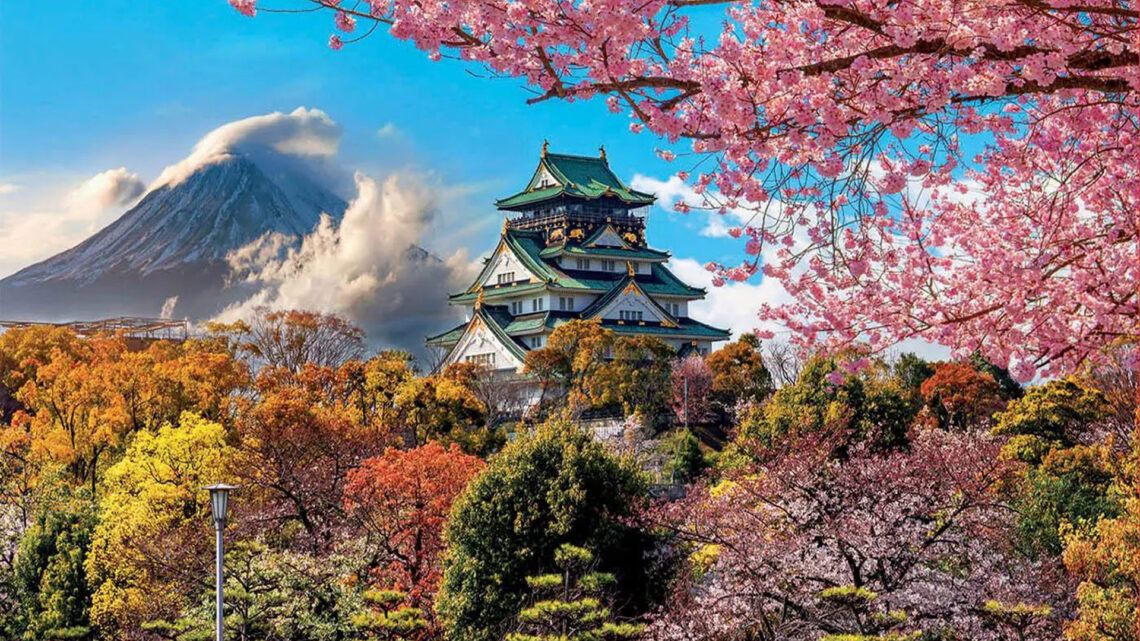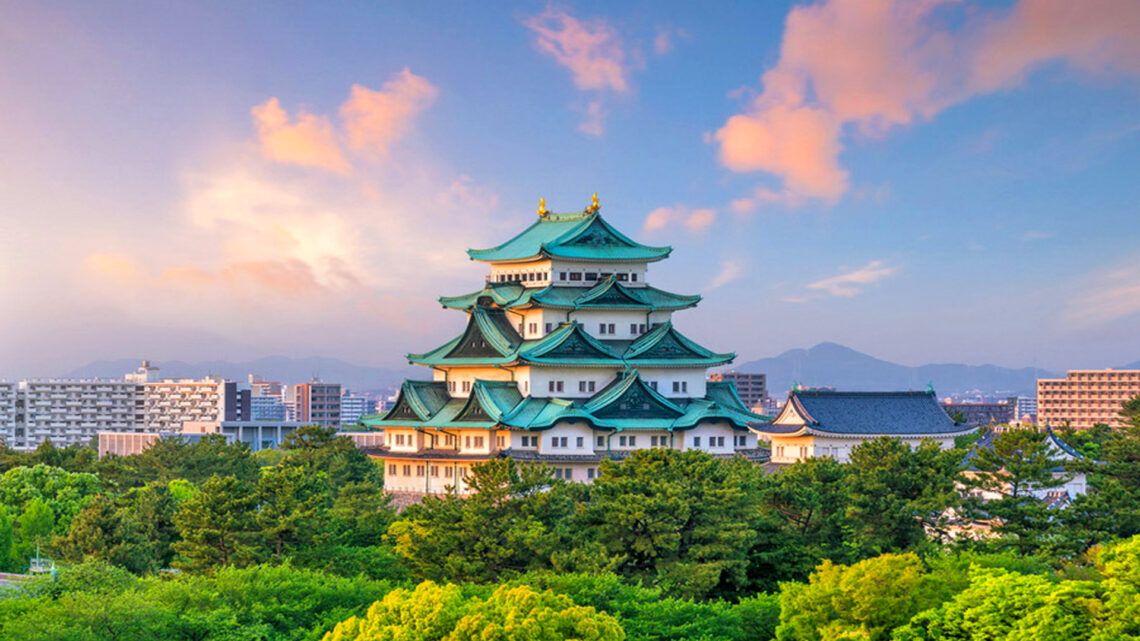
The Aoi Matsuri, one of Japan’s oldest and most traditional festivals, takes place every year in May in Kyoto. This vibrant festival, also known as the “Kamo Festival,” attracts thousands of visitors from around the world. The roots of this festival date back to the 7th century, celebrating the rich history and culture of Japan’s former capital.
The Aoi Matsuri originated in the 6th century during the Asuka period. It is believed that the festival began as a way to appease the gods of the Shimogamo and Kamigamo Shrines, praying for a bountiful harvest and protection from natural disasters. The name “Aoi” derives from the aoi leaves (wild ginger leaves), considered sacred plants, which are seen everywhere during the festival.
The highlight of the Aoi Matsuri is undoubtedly the magnificent procession that takes place on May 15th. This procession, also known as “Roto no Gi,” starts at the Kyoto Imperial Palace and moves at a slow, ceremonial pace towards the Shimogamo and Kamigamo Shrines.
The procession features around 500 participants dressed in elaborate historical costumes. These costumes reflect the fashion of the Heian period and are meticulously recreated to give spectators an authentic glimpse into the past. The participants include men, women, and children who play various roles, such as nobles, warriors, and court ladies.
The procession begins at the Kyoto Imperial Palace (Kyoto Gosho) and winds through the city streets before reaching the shrines. The route is approximately eight kilometers long and takes several hours. Along the way, thousands of spectators line the streets to catch a glimpse of the splendid costumes and the majestic atmosphere.
The Sacred Virgin: Saio-Dai

One of the central figures of the Aoi Matsuri is the Saio-Dai, a young woman who takes on the role of a priestess. Originally, this role was filled by an unmarried princess from the imperial family. Nowadays, the Saio-Dai is selected from among the female citizens of Kyoto. She wears elaborate robes and a splendid headdress adorned with aoi leaves. The Saio-Dai leads the procession and plays a crucial role in the festival’s religious ceremonies. Her presence symbolizes purity and divine blessing.
In addition to the procession, the Aoi Matsuri includes various rituals and ceremonies held at the Shimogamo and Kamigamo Shrines. These ceremonies involve prayers for prosperity and protection, as well as traditional dance and music performances. The rituals are deeply rooted in Shinto traditions, offering participants and spectators a spiritual experience.
The aoi leaves are a central symbol of the festival and are found in decorations, costumes, and rituals. They are considered sacred plants believed to ward off evil spirits and bring good fortune. During the Aoi Matsuri, the streets, shrines, and costumes are adorned with these leaves, giving the festival a unique and authentic atmosphere.
The Origins and Heritage of the Aoi Matsuri

The Aoi Matsuri, one of Japan’s oldest and most traditional festivals, has a long and fascinating history dating back to the 6th century. Officially known as the Kamo Matsuri, this festival has evolved over the centuries into a significant cultural event deeply rooted in Kyoto’s religious and social traditions. The following provides a detailed description of the origins and development of the Aoi Matsuri.
The origins of the Aoi Matsuri lie in the Asuka period (538-710), a time of significant cultural and political changes in Japan. The festival was first celebrated during the reign of Emperor Kinmei (539-571). It is believed that the Aoi Matsuri was established to appease the gods of the Shimogamo and Kamigamo Shrines, which were regarded as important protective deities for the imperial family and the city of Kyoto.
The two Kamo Shrines, Shimogamo and Kamigamo, play a central role in the Aoi Matsuri. These shrines are dedicated to the Kamo deities, who are revered as the protectors of the city and its inhabitants. The Shimogamo Shrine, officially known as the Kamo-mioya Shrine, is located near the confluence of the Kamo and Takano Rivers. The Kamigamo Shrine, also called the Kamo-wakeikazuchi Shrine, is situated further north in Kyoto. Both shrines have a long history and are deeply rooted in Shinto tradition.
One of the most popular legends about the origin of the Aoi Matsuri tells of a severe famine and natural disasters that struck the region around Kyoto. To appease the gods and seek their blessing for a bountiful harvest, the emperor sent an envoy to the Shimogamo and Kamigamo Shrines to offer sacrifices. These ceremonies were so successful that they were repeated annually to gain the favor of the gods and ensure the prosperity of the city.
During the Heian period (794-1185), the Aoi Matsuri reached its peak. Kyoto, then known as Heian-kyo, was the imperial capital of Japan and a center of cultural activities. The Aoi Matsuri became an important event in the imperial court calendar, reflecting the magnificent court culture of that era. The festival was not only a religious ceremony but also an opportunity for the aristocracy to display their power and wealth.
It was during this time that the magnificent procession, which remains the heart of the festival today, developed. Nobles and members of the imperial court participated in elaborate costumes that embodied the style and elegance of the Heian period. The tradition of the Saio-Dai, an imperial princess who served as a high priestess, also originated in this period. The Saio-Dai played a central role in the festival’s rituals and ceremonies.
The Name “Aoi Matsuri”

The name “Aoi Matsuri” derives from the aoi leaves (wild ginger leaves) that are omnipresent during the festival. These leaves are considered sacred and are used to adorn the shrines, costumes, and procession items. The aoi plant was regarded as a symbol of purity and as protection against evil spirits. The festival’s name emphasizes the significance of these plants in the rituals and ceremonies.
During the Edo period (1603-1868), the Aoi Matsuri experienced a revival. After a period of relative decline in the Middle Ages, the festival regained popularity and received support from the Tokugawa Shogunate government. The procession and ceremonies were once again conducted in full scale, and the Aoi Matsuri reclaimed its status as one of Kyoto’s most important festivals.
With the beginning of the Meiji Restoration (1868) and the relocation of the capital to Tokyo, Kyoto lost its political significance. However, the Aoi Matsuri remained a central part of the city’s cultural life. Despite modernization and changes in Japanese society, the festival has preserved its traditional elements and continues to attract large crowds.
Today, the Aoi Matsuri is meticulously organized and maintained by the city of Kyoto and the Kamo Shrines. Volunteers and local communities play a crucial role in the preparation and execution of the festival. The tradition of the Saio-Dai has been modernized, and today this role is taken on by a young woman from the local community, selected through a rigorous selection process.
The origins and development of the Aoi Matsuri reflect the rich history and cultural significance of this festival. From its beginnings in the Asuka period, its peak in the Heian period, its revival in the Edo period, and its continuation into the modern era, the Aoi Matsuri has maintained its place as one of Japan’s most significant and fascinating festivals. The combination of religious rituals, splendid processions, and deeply rooted traditions makes the Aoi Matsuri a unique event that immerses visitors in Kyoto’s past and celebrates the city’s vibrant culture.
Traveling to the Aoi Matsuri

Kyoto, the former imperial capital of Japan, is a popular travel destination, especially during the Aoi Matsuri. Traveling to the festival requires some planning to ensure that visitors arrive at the venues on time and find the best spots along the procession route. Here are some detailed information and tips for traveling to the Aoi Matsuri.
Getting to Kyoto
Kyoto is well connected to both national and international transportation networks. Here are the main options for reaching Kyoto:
The nearest international airport is Kansai International Airport (KIX), about 75 minutes by train from Kyoto. The Haruka Express provides direct train connections from the airport to Kyoto.
Alternatively, you can also travel via Osaka International Airport (Itami), which is about 50 minutes from Kyoto by limousine bus or train.
By Train: Kyoto is excellently connected to the Shinkansen high-speed rail network. The Tokaido Shinkansen connects Kyoto with Tokyo in about two and a half hours, and from Osaka, the journey takes only about 15 minutes. The JR lines, including the Haruka Express and other regional trains, also offer convenient connections to Kyoto.
By Bus: For budget-conscious travelers, there are numerous long-distance buses connecting Kyoto with major cities across Japan. These buses are usually cheaper than the Shinkansen but take longer.
Getting Around in Kyoto
Once in Kyoto, there are various ways to get around and reach the venues of the Aoi Matsuri:
Public Transportation: Trains and Subways: Kyoto has an efficient network of JR lines, private railways, and two subway lines. The main stations are Kyoto Station, Karasuma-Oike, and Gion-Shijo.
The bus network in Kyoto is extensive and covers most tourist attractions and festival venues. For visitors, the Kyoto City Bus Day Pass is a cost-effective option for unlimited bus rides for the day.
On Foot:
Many of Kyoto’s attractions are within walking distance of each other. A walk through the historic streets is a pleasant way to explore the city.
Getting to the Aoi Matsuri Venues
The main venues for the Aoi Matsuri are the Kyoto Imperial Palace (Kyoto Gosho), the Shimogamo Shrine, and the Kamigamo Shrine. Here are some tips for getting to these locations:
Kyoto Imperial Palace:
By Subway: The nearest subway station is Marutamachi Station on the Karasuma Line, just a short walk from the palace.
By Bus: Several bus lines stop near the Imperial Palace, including lines 9, 50, and 101.
Shimogamo Shrine:
By Subway: The nearest subway station is Demachiyanagi Station on the Keihan Line. From there, it is about a 10-minute walk to the shrine.
By Bus: Bus lines 4 and 205 stop near the Shimogamo Shrine.
Kamigamo Shrine:
By Bus: Bus lines 4 and 46 provide connections to the Kamigamo Shrine. The Kamigamo Misonobashi stop is the closest point.
Best Spots Along the Procession Route
To find the best spots along the Aoi Matsuri procession route, it is advisable to arrive early. The procession starts at the Imperial Palace and winds through the city to the shrines. Here are some tips:
Kyoto Imperial Palace: The procession begins here, and there are many good spots along the palace walls. Especially along Karasuma-dori, there are excellent vantage points.
Along the Kamo River: The streets along the Kamo River offer many free spots. Particularly at the bridges, you have a good view of the procession.
Shimogamo and Kamigamo Shrines: Both shrines offer special viewing areas. It is a good idea to arrive early to secure a front-row spot. Traveling to the Aoi Matsuri in Kyoto is well-organized and easy to manage with the comprehensive transportation network. Whether by plane, train, bus, or bike, there are many ways to reach the former imperial city. Once there, the well-connected public transportation ensures that visitors can conveniently reach the festival venues. Arriving early and choosing the best vantage points along the procession route guarantee an unforgettable experience of this historic festival.
My Conclusion:
The Aoi Matsuri is more than just a festival—it is a living tradition that connects the past with the present. It offers a fascinating insight into the history and culture of Kyoto, allowing visitors to experience the spiritual and aesthetic beauty of Japan. With its magnificent procession, profound rituals, and distinctive atmosphere, the Aoi Matsuri remains an unforgettable experience for all who are fortunate enough to participate.



